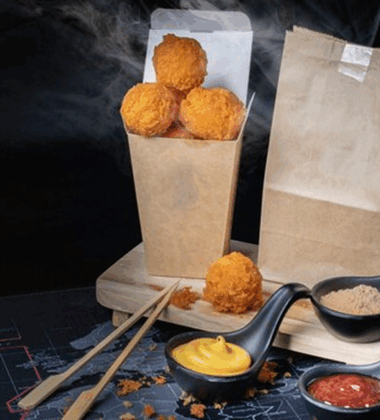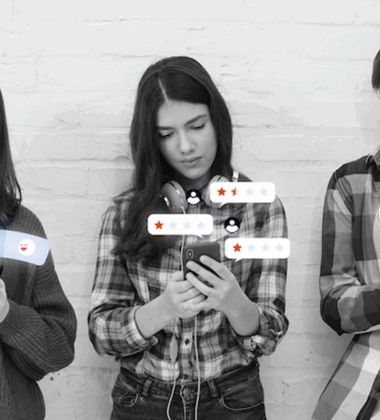Food has always been a multisensory experience—but in 2025, it’s becoming a full-blown performance. At the Food and Beverage Expo USA, set to take place June 26–28, 2025, at the New Jersey Expo Center, immersive dining experiences are rapidly emerging as one of the most talked-about trends on the show floor. From interactive food installations to chef-led tasting theatrics, eating is no longer just about consumption—it’s about connection, storytelling, and sensation.
This shift toward experiential eating is not just a gimmick. It’s a response to deeper consumer desires for memorable, meaningful interactions with food and the brands behind it. For exhibitors at the Food and Beverage Expo USA, embracing immersive dining isn’t just a novelty—it’s a powerful marketing strategy.
What Is an Immersive Dining Experience?
An immersive dining experience blends food with storytelling, visuals, sounds, textures, and audience participation. It transforms meals into performances and booths into stages. These events can include:
- Theatrical plating and presentation
- Live cooking and chef storytelling
- Multisensory environments with lighting, scents, soundscapes
- Themed tasting menus tied to cultural narratives or brand origin stories
- Augmented or virtual reality food interactions
- Audience-driven menus that change based on guest choices or inputs
Immersive dining taps into consumer psychology. It creates stronger emotional associations, boosts memorability, and increases social media engagement—all crucial outcomes for brands exhibiting at large-scale events like the Food and Beverage Expo USA.
Why Experiential Eating Works at Expos
1. It Cuts Through the Noise
Expos are crowded, both literally and figuratively. With hundreds of booths competing for attention, offering a snack or sample isn’t enough. An immersive dining experience draws visitors in, slows them down, and invites them to engage more deeply.
Whether it’s a moody speakeasy-style tasting booth or a vibrant food lab with interactive elements, experiential setups help brands stand out and linger in the minds of visitors well after the show ends.
2. It Encourages Social Sharing
Attendees love to share unique expo moments. Immersive dining experiences are inherently Instagrammable and TikTok-friendly. A dramatic dry-ice cocktail, a color-changing dessert, or a 360-degree flavor chamber are all primed for online buzz, which extends your reach beyond the expo floor.
3. It Aligns with Changing Consumer Values
Today’s consumers are not just buyers—they’re experience seekers. They crave emotional connection, story-driven consumption, and opportunities for exploration. Immersive dining experiences offer all of these, especially when brands tie them to values like sustainability, cultural heritage, or innovation.
Case Study: How One Brand Won Big with Theatrical Eating
At last year’s international food expo circuit, a plant-based dairy alternative brand launched a theatrical tasting booth inspired by nature’s elements. Each tasting station featured a different “climate zone”—complete with ambient sound and scent—highlighting how their ingredients were ethically sourced from different regions.
Visitors were led through the space by a trained brand ambassador who played the role of a “flavor guide.” Each product was paired with a personal story from a farmer, projected on surrounding LED panels. The immersive dining journey lasted seven minutes—but the impression lasted far longer.
As a result, the brand:
- Collected over 3,000 new B2B leads
- Generated 2.5 million impressions on social media
- Was featured in three major food trade publications
- Secured two major distribution contracts from international buyers
This type of outcome shows the ROI potential of designing immersive dining into trade show strategy.
Components of a Successful Immersive Dining Experience
For exhibitors planning for the Food and Beverage Expo USA, here’s what makes an immersive food activation stand out:
1. A Strong Concept
Start with a clear theme. Is your concept inspired by a region? A technology? A story? A belief? The more specific and coherent the idea, the stronger the experience.
2. Interactive Elements
Give guests a role in the dining journey. This could be through flavor customization, ingredient mixing, storytelling, or gamified tasting stations.
3. Multisensory Integration
Use sound, light, aroma, and touch. You don’t need to go full VR—sometimes a well-placed scent diffuser or ambient soundtrack can transform a space.
4. Clear Brand Messaging
Even in an artistic setup, your brand voice must be front and center. Reinforce your value proposition: Is it health? Sustainability? Local sourcing? Global innovation? Make it part of the narrative arc.
5. Staff Training
Booth staff are not just servers—they’re storytellers. Train them to guide visitors through the experience and answer questions about sourcing, flavor development, and brand values.
Opportunities for F&B Exhibitors at the Expo
At the Food and Beverage Expo USA, exhibitors have a unique chance to go beyond the table. Consider incorporating immersive dining experiences in these ways:
- Private tasting rooms within your booth for VIP buyers
- Time-slotted food journeys with limited seating and exclusive presentations
- Chef demonstrations with live storytelling and audience Q&A
- Collaborative food installations with local artists or designers
- Hybrid virtual-real tastings for remote attendees and global press
These strategies not only create buzz but can also lead to stronger buyer relationships, media exposure, and long-term brand loyalty.
Challenges to Consider
While immersive dining is powerful, it does come with planning and operational demands:
- Health and safety compliance for live food experiences
- Space constraints in standard expo booths
- Technology setup for lighting, audio, or AR elements
- Budgeting for design, staffing, and materials
Many brands collaborate with creative agencies, culinary consultants, or experiential design studios to address these. Even small touches—like live flavor commentary or interactive plating—can make a difference for first-time participants.
The Future of Immersive Dining at Trade Shows
As we move deeper into 2025, food and beverage expos across the U.S. and globally will see even more integration of immersive dining, performance art, and digital food storytelling. With increasing expectations from consumers, and rapid innovation in food tech and event design, the standard for what a “tasting booth” can be is rising fast.
Brands that embrace this transformation—bold enough to turn dining into a full sensory experience—will not just capture attention; they’ll lead the conversation.
Final Thoughts
The immersive dining experience is more than a trend—it’s a strategic advantage for brands like the Food and Beverage Expo USA. In a market flooded with options and instant impressions, creating a space where people can feel your food, not just taste it, may be the most powerful way to stand out.
As you prepare your booth strategy, ask yourself: Are you feeding your audience’s hunger for connection, curiosity, and creativity—or just their appetite?





